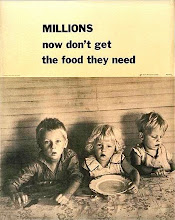Click image to see full size
This post updates a chart initially presented here with a few months more data. The same Muana Loa data set published by NOAA used for related posts on atmospheric CO2 is the basis for this chart. Muana Loa data is converted to different forms of visual information to provide alternative illustrations of the global CO2 trend.
In this case, 606 months of data have been compressed into average annual growth calculated over 5-year periods. This approach smooths out variation found in any particular year and creates a simple view of a 50-year trend. Each bar represents a 5-year average, except for the bar on the right, which reports the 6-months ending in June 2010. This bar is updated as new data is obtained.
The chart reports something so basic it might be missed: CO2 doesn't decline, it only increases. The last monthly decline was recorded in September 1974. There hasn't been a single annual reduction in CO2 since the Muana Loa data series was initiated in 1958. Two projections of future CO2 levels are presented here.
In another example of journalism practiced as the art of ignoring the obvious, the New York Times finally published an article which suggests that carbon consumption stimulated by explosive growth in the global consumer class will outrun implementation of clean energy policies and technologies. Since it's the Times, the article presents a narrow view, limited to China. While China's projected future carbon output is frightening, the issue is much broader. The global middle class is experiencing unprecedented, unstoppable growth across the developing world.
Stay tuned for future updates.





















+breed+danger+6x8.jpg)











+5x7.jpg)


No comments:
Post a Comment